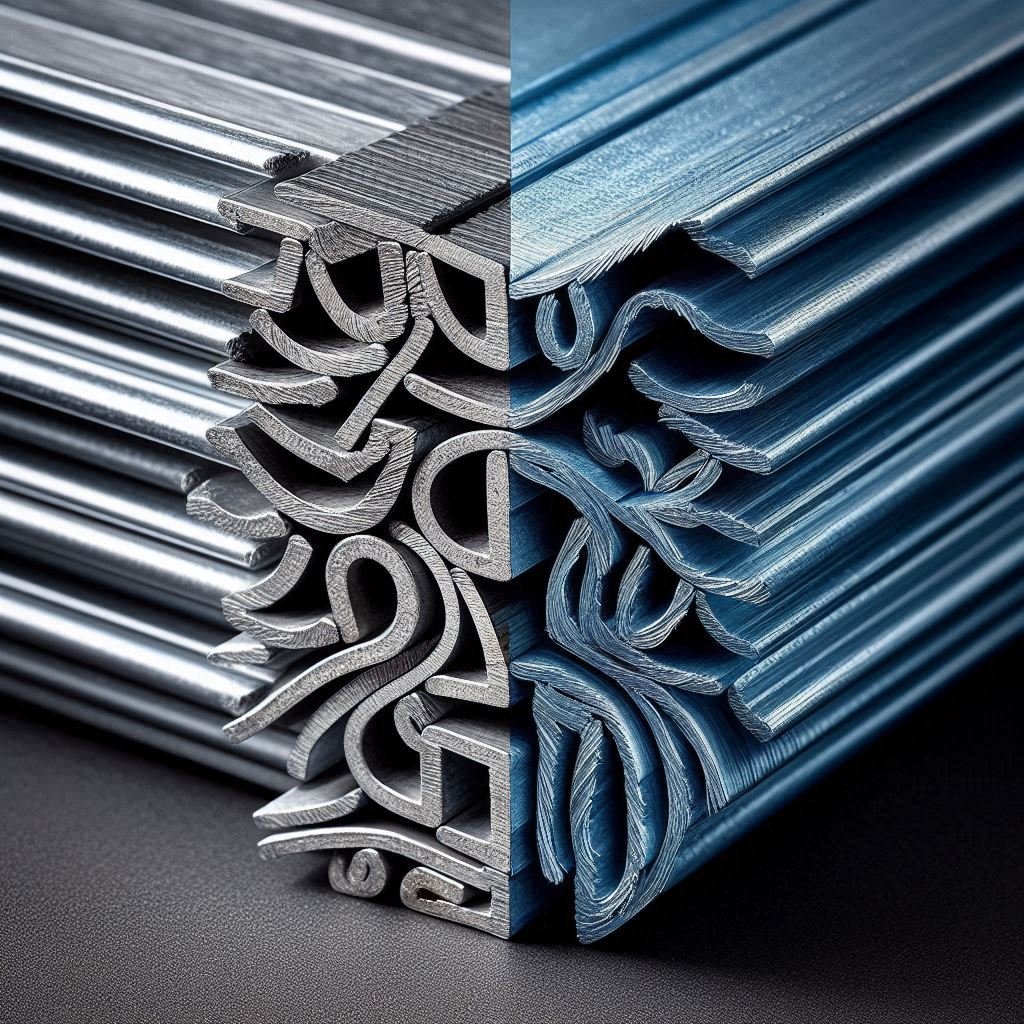Steel is a versatile and widely used material in various industries, thanks to its strength and durability. However, when it comes to protecting steel from corrosion, two common methods are often employed: galvanization and zinc plating. In this blog post, we will explore the differences between Galvanized vs. Zinc-Plated steel and help you determine which one is the better choice for your specific needs.
Galvanized Steel
Galvanization is a process that involves applying a layer of zinc to steel, creating a protective barrier against corrosion. This process is achieved through hot-dip galvanizing, where steel is immersed in a bath of molten zinc, or through electro-galvanizing, which uses an electric current to bond zinc to the steel’s surface.
Advantages of Galvanized Steel:
- Exceptional Corrosion Resistance: Galvanized steel offers superior corrosion resistance compared to bare steel. The zinc coating acts as a sacrificial barrier, corroding in place of the steel underneath.
- Longevity: Galvanized steel can last for decades in harsh environments, making it an excellent choice for outdoor applications like fencing, roofing, and structural support.
- Low Maintenance: Once galvanized, steel requires minimal maintenance. It doesn’t need to be painted or coated regularly, reducing long-term maintenance costs.
- Aesthetic Appeal: Galvanized steel has a distinct appearance, often described as a shiny, metallic finish, which can be visually appealing in certain applications.
- Environmentally Friendly: Zinc is a naturally occurring element and can be recycled, making galvanized steel an eco-friendly option.
Zinc-Plated Steel
Zinc plating, also known as electroplating, involves depositing a thin layer of zinc onto the surface of steel. This process is typically used for smaller components and parts rather than large structural elements.
Advantages of Zinc-Plated Steel:
- Cost-Effective: Zinc plating is a more cost-effective option compared to hot-dip galvanization. It is often chosen for budget-conscious projects.
- Precision: Zinc plating provides a more precise and uniform coating thickness, making it suitable for components that require tight tolerances.
- Appearance: Zinc-plated steel has a more polished and consistent appearance compared to galvanized steel, which can be desirable for certain applications.
- Ease of Coating: Since zinc-plated steel has a smoother surface, it can be further coated or painted with relative ease for additional protection or aesthetics.
- Electrical Conductivity: Zinc-plated steel can maintain its electrical conductivity, making it suitable for electrical components.
Choosing the Right Option
The choice between galvanized and zinc-plated steel depends on several factors, including:
- Environmental Conditions: Consider the environment in which the steel will be used. Galvanized steel is ideal for outdoor applications where it will be exposed to moisture and harsh weather, while zinc-plated steel may suffice for indoor or less demanding conditions.
- Budget: Your budget plays a significant role in the decision-making process. Zinc plating is generally more cost-effective upfront, but galvanized steel offers greater long-term cost savings due to its durability.
- Aesthetics: If the appearance of the steel is important for your project, zinc-plated steel might be the better choice due to its smoother and more uniform finish.
- Size and Complexity: Consider the size and complexity of the steel components. For larger structural elements, galvanization is often the preferred option, while smaller, intricate parts may benefit from zinc plating.
Conclusion
In the debate regarding Galvanized vs. Zinc-Plated steel, there is no one-size-fits-all answer. Both methods offer corrosion resistance, but they excel in different areas. Galvanized steel is the go-to choice for outdoor and heavy-duty applications, thanks to its robust corrosion resistance and longevity. On the other hand, zinc-plated steel is a cost-effective option for smaller components and parts where precision and aesthetics matter.
Ultimately, the decision should be based on your project’s specific requirements, budget, and environmental conditions. By understanding the advantages of each method, you can make an informed choice and ensure the longevity and performance of your steel products.

